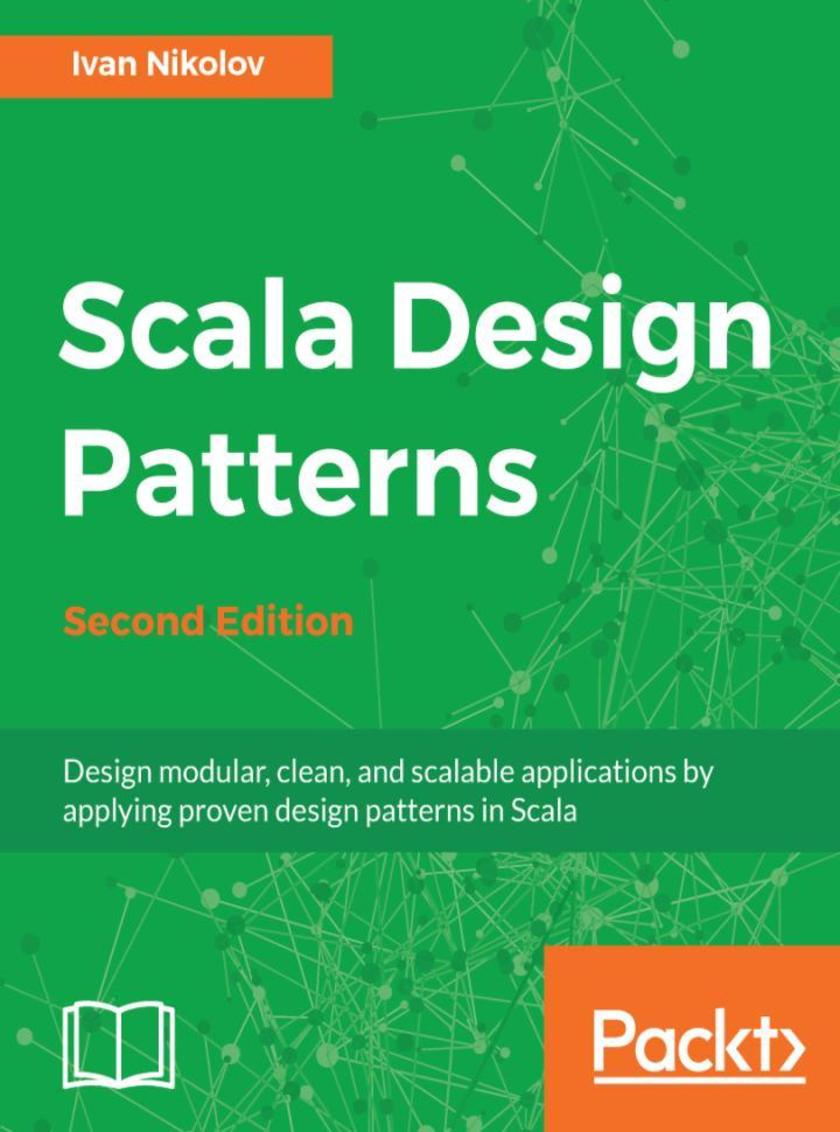
Scala Design Patterns.
¥81.74
Learn how to write efficient, clean, and reusable code with Scala About This Book ? Unleash the power of Scala and apply it in the real world to build scalable and robust applications. ? Learn about using and implementing Creational, Structural, Behavioral, and Functional design patterns in Scala ? Learn how to build scalable and extendable applications efficiently Who This Book Is For If you want to increase your understanding of Scala and apply design patterns to real-life application development, then this book is for you.Prior knowledge of Scala language is assumed/ expected. What You Will Learn ? Immerse yourself in industry-standard design patterns—structural, creational, and behavioral—to create extraordinary applications ? See the power of traits and their application in Scala ? Implement abstract and self types and build clean design patterns ? Build complex entity relationships using structural design patterns ? Create applications faster by applying functional design patterns In Detail Design patterns make developers’ lives easier by helping them write great software that is easy to maintain, runs efficiently, and is valuable to the company or people concerned. You’ll learn about the various features of Scala and will be able to apply well-known, industry-proven design patterns in your work. The book starts off by focusing on some of the most interesting and latest features of Scala while using practical real-world examples. We will be learning about IDE’s and Aspect Oriented Programming. We will be looking into different components in Scala. We will also cover the popular "Gang of Four" design patterns and show you how to incorporate functional patterns effectively. The book ends with a practical example that demonstrates how the presented material can be combined in real-life applications. You’ll learn the necessary concepts to build enterprise-grade applications. By the end of this book, you’ll have enough knowledge and understanding to quickly assess problems and come up with elegant solutions. Style and approach The design patterns in the book are explained using real-world, step-by-step examples. For each design pattern, there are tips on when to use it and when to look for something more suitable. This book can also be used as a practical guide, showing you how to leverage design patterns effectively. We've designed the book to be used as a quick reference guide while creating applications.
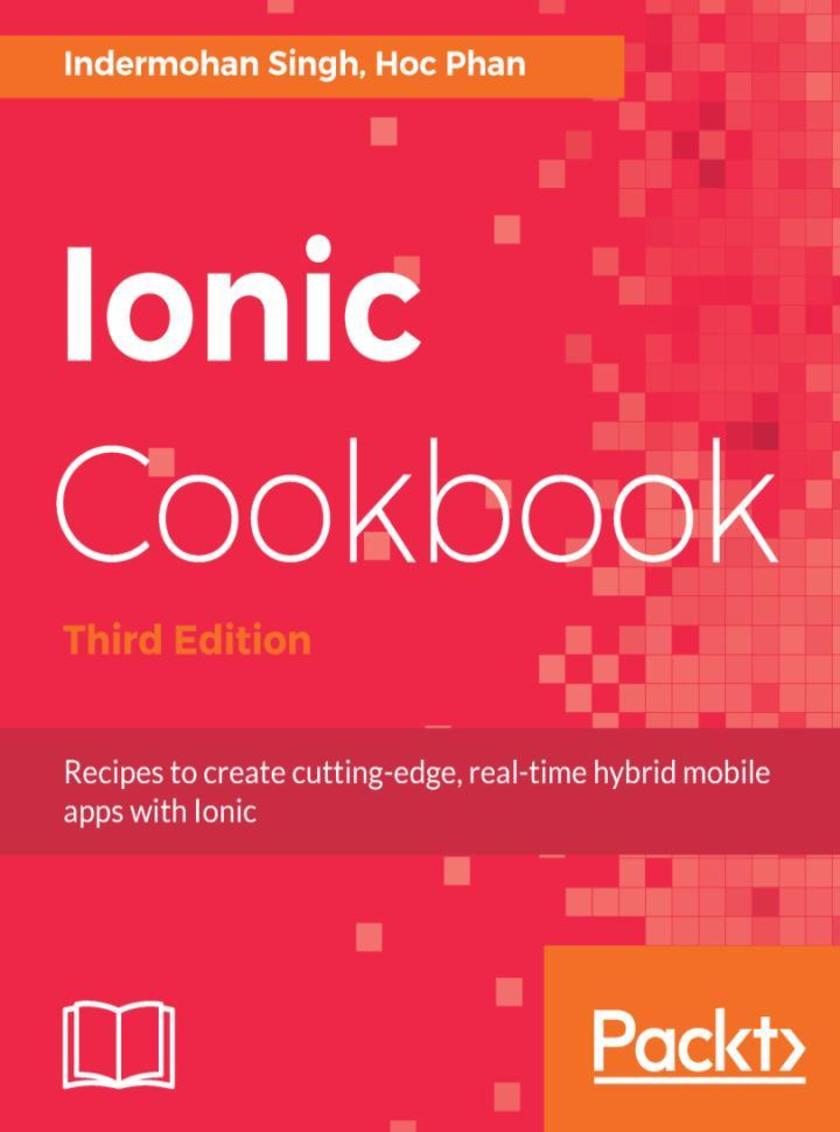
Ionic Cookbook
¥81.74
Solve all your Ionic-related issues through dedicated recipes that will help you get the best out of Ionic. Working with Ionic components to find out the best way to share data between them effectively. About This Book ? Leverage Ionic 3.9 and its exciting new features to create cutting-edge, real-time apps ? Work through simple recipes to address your problems directly and solve them effectively ? Get examples at each step to guide you on your learning curve with Angular Who This Book Is For This book targets JavaScript developers. No previous knowledge of Ionic is necessary, but prior knowledge of web development techniques would be useful. What You Will Learn ? Help readers to jump-start Ionic apps ? Explore essential features of Ionic with examples ? Learn how to use native device functionalities ? Make the best use of the REST API to handle back-end services ? Work with Cordova to support native functionalities on both iOS and Android. ? Master advanced topics in app development such as deep linking and lazy loading In Detail Ionic is the preferred choice for JavaScript developers to develop real-time hybrid applications. This book will get you started with Ionic 3.9 and help you create Angular 5 components that interact with templates. You will work with Ionic components and find out how to share data efficiently between them. You'll discover how to make the best use of the REST API to handle back-end services and then move on to animating your application to make it look pretty. You then learn to add in a local push notification in order to test the app. Then you'll work with Cordova to support native functionalities on both iOS and Android. From there, you'll get to grips with using the default themes for each platform and customizing your own. We then take you through the advanced Ionic features like lazy loading, deep linking, localizing ionic apps etc. Finally, you'll see how best to deploy your app to different platforms. This book will solve all your Ionic-related issues through dedicated recipes that will help you get the best out of Ionic. Style and approach The book's recipe-based approach will help you get the best out of Ionic 3.9
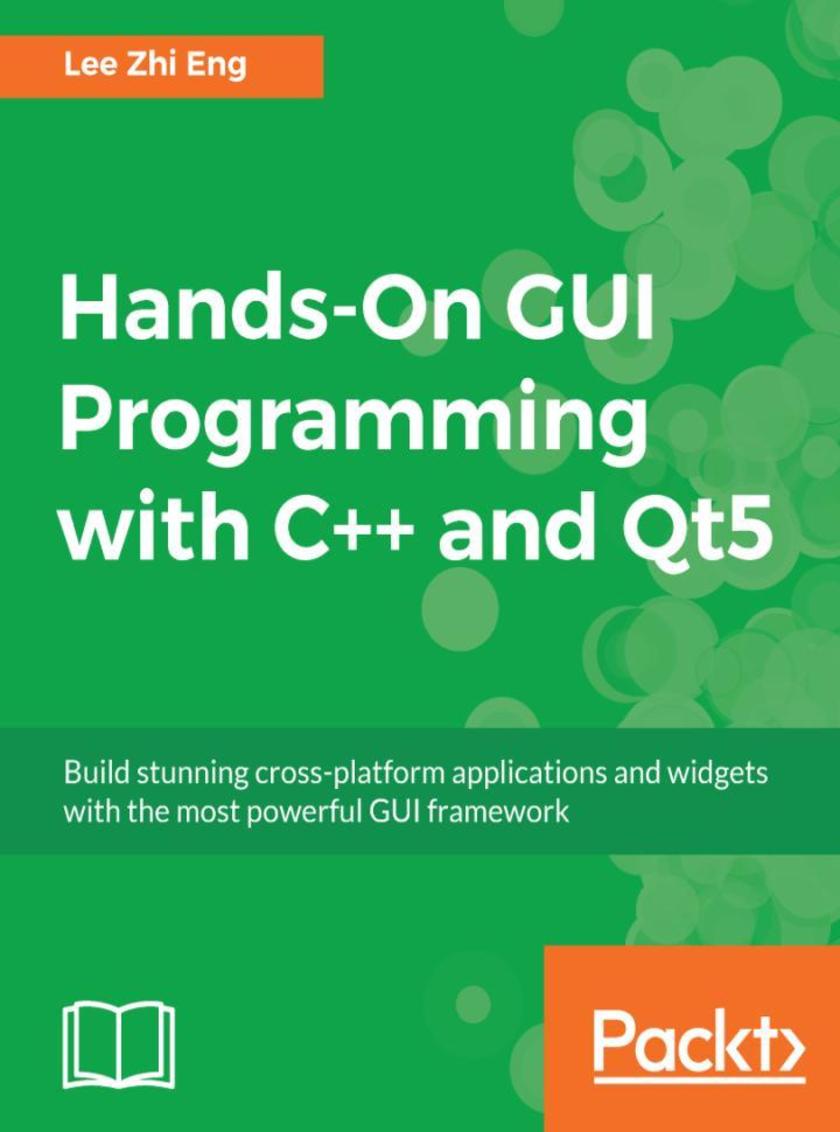
Hands-On GUI Programming with C++ and Qt5
¥81.74
Create visually appealing and feature-rich applications by using Qt 5 and the C++ language About This Book ? Explore Qt 5’s powerful features to easily design your GUI application ? Leverage Qt 5 to build attractive cross-platform applications ? Work with Qt modules for multimedia, networking, and location, to customize your Qt applications Who This Book Is For This book will appeal to developers and programmers who would like to build GUI-based applications. Basic knowledge of C++ is necessary and the basics of Qt would be helpful. What You Will Learn ? Implement tools provided by Qt 5 to design a beautiful GUI ? Understand different types of graphs and charts supported by Qt 5 ? Create a web browser using the Qt 5 WebEngine module and web view widget ? Connect to the MySQL database and display data obtained from it onto the Qt 5 GUI ? Incorporate the Qt 5 multimedia and networking module in your application ? Develop Google Map-like applications using Qt 5’s location module ? Discover cross-platform development by exporting the Qt 5 application to different platforms ? Uncover the secrets behind debugging Qt 5 and C++ applications In Detail Qt 5, the latest version of Qt, enables you to develop applications with complex user interfaces for multiple targets. It provides you with faster and smarter ways to create modern UIs and applications for multiple platforms. This book will teach you to design and build graphical user interfaces that are functional, appealing, and user-friendly. In the initial part of the book, you will learn what Qt 5 is and what you can do with it. You will explore the Qt Designer, discover the different types of widgets generally used in Qt 5, and then connect your application to the database to perform dynamic operations. Next, you will be introduced to Qt 5 chart which allows you to easily render different types of graphs and charts and incorporate List View Widgets in your application. You will also work with various Qt modules, like QtLocation, QtWebEngine, and the networking module through the course of the book. Finally, we will focus on cross-platform development with QT 5 that enables you to code once and run it everywhere, including mobile platforms. By the end of this book, you will have successfully learned about high-end GUI applications and will be capable of building many more powerful, cross-platform applications. Style and approach This is a comprehensive guide that explores the essential Qt features and implement them in building real-world cross-platform GUI applications
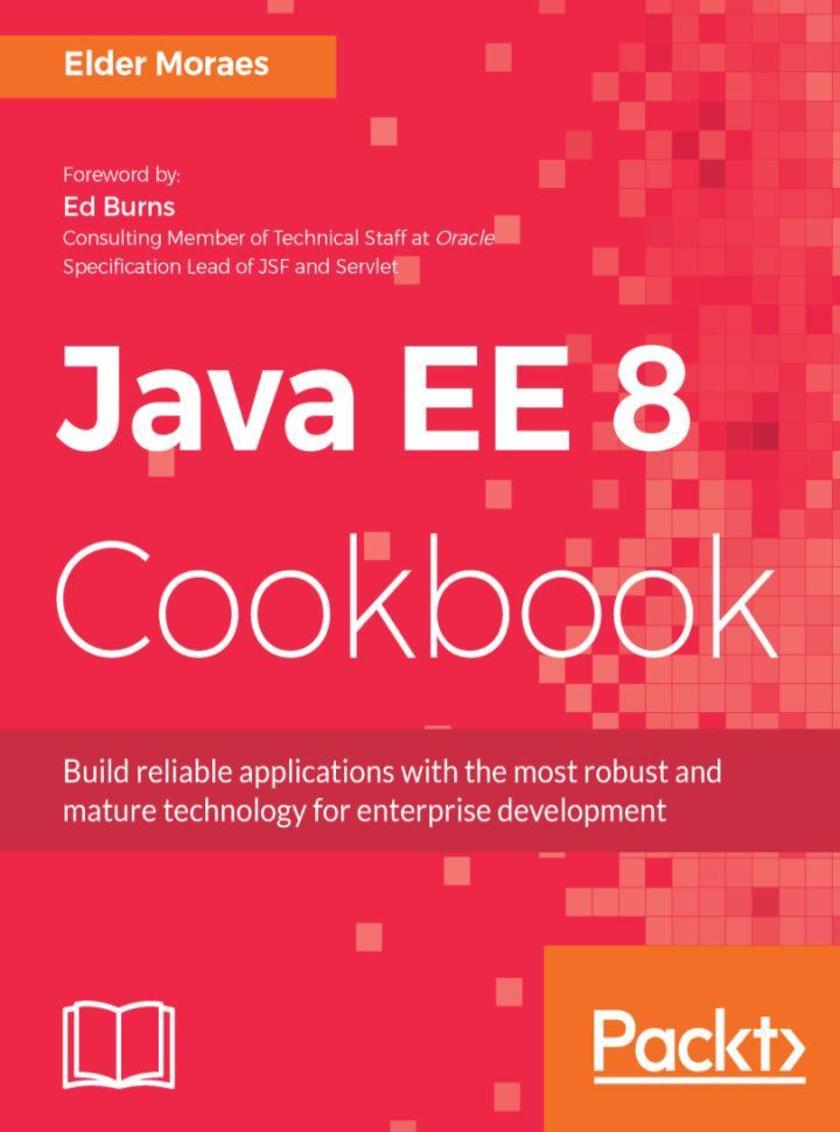
Java EE 8 Cookbook
¥90.46
A practical guide for building effective enterprise solutions with Java EE 8 About This Book ? Recipes to get you up-and-running with Java EE 8 application development ? Learn how to apply the major Java EE 8 APIs and specifications ? Implement microservices and Reactive programming with Java EE 8 Who This Book Is For This book is for developers who want to become proficient with Java EE 8 for their enterprise application development. Basic knowledge of Java is assumed What You Will Learn ? Actionable information on the new features of Java EE 8 ? Using the most important APIs with real and working code ? Building server side applications, web services, and web applications ? Deploying and managing your application using the most important Java EE servers ? Building and deploying microservices using Java EE 8 ? Building Reactive application by joining Java EE APIs and core Java features ? Moving your application to the cloud using containers ? Practical ways to improve your projects and career through community involvement In Detail Java EE is a collection of technologies and APIs to support Enterprise Application development. The choice of what to use and when can be dauntingly complex for any developer. This book will help you master this. Packed with easy to follow recipes, this is your guide to becoming productive with Java EE 8. You will begin by seeing the latest features of Java EE 8, including major Java EE 8 APIs and specifications such as JSF 2.3, and CDI 2.0, and what they mean for you. You will use the new features of Java EE 8 to implement web-based services for your client applications. You will then learn to process the Model and Streaming APIs using JSON-P and JSON-B and will learn to use the Java Lambdas support offered in JSON-P. There are more recipes to fine-tune your RESTful development, and you will learn about the Reactive enhancements offered by the JAX-RS 2.1 specification. Later on, you will learn about the role of multithreading in your enterprise applications and how to integrate them for transaction handling. This is followed by implementing microservices with Java EE and the advancements made by Java EE for cloud computing. The final set of recipes shows you how take advantage of the latest security features and authenticate your enterprise application. At the end of the book, the Appendix shows you how knowledge sharing can change your career and your life. Style and approach Task based learning guide to help ease application development with Java EE.
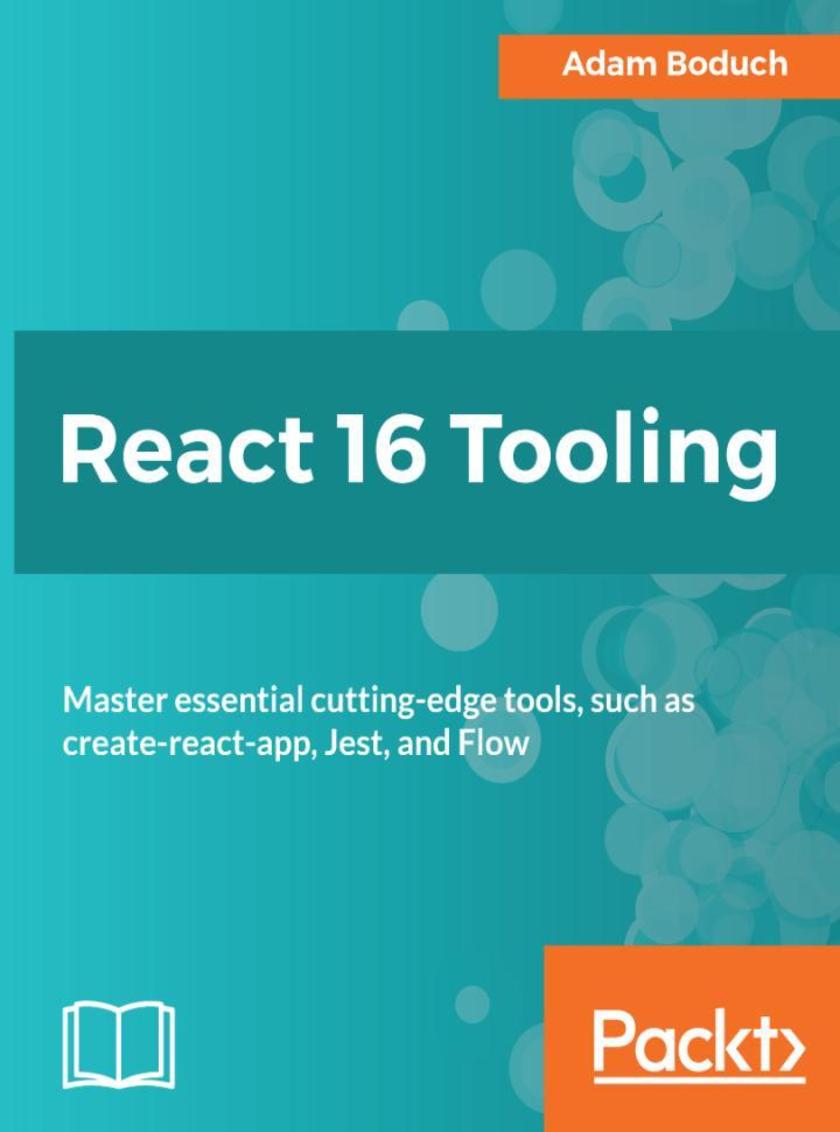
React 16 Tooling
¥81.74
React 16 Tooling covers the most important tools, utilities, and libraries that every React developer needs to know - in detail. About This Book ? Each chapter presents meta-development solutions to help React developers ? The tools used are presented in a practical, solution-oriented approach with no fluff ? The chapters are arranged in a logical order that mirrors a typical React development workflow, but you are free to tweak the approaches discussed to fit your own unique style Who This Book Is For This book is for React developers of any skill level who want to make their lives easier. It helps to have some familiarity with React, but if you are an experienced web developer looking at React, then this book will show you how to build a resilient toolset around you before you begin. What You Will Learn ? Bootstrap a React application using create-react-app ? Isolate React component development using Storybook ? Write effective unit tests for your React components using Jest ? Ensure that your component code is to standard using ESLint ? Use browser extensions and built-in component instrumentation to debug React applications ? Enable type safety in React components with Flowtype ? Deploy React applications inside a Docker container as part of a larger application stack In Detail React 16 Tooling covers the most important tools, utilities, and libraries that every React developer needs to know - in detail. As React has grown, the amazing toolset around it has also grown, adding features and enhancing the development workflow. Each of these essential tools is presented in a practical manner and in a logical order mirroring the development workflow. These tools will make your development life simpler and happier, enabling you to create better and more performant apps. Adam starts with a hand-picked selection of the best tools for the React 16 ecosystem. For starters, there's the create-react-app utility that's officially supported by the React team. Not only does this tool bootstrap your React project for you, it also provides a consistent and stable framework to build upon. The premise is that when you don't have to think about meta development work, more focus goes into the product itself. Other React tools follow this same approach to automating and improving your development life. Jest makes unit testing quicker. Flow makes catching errors easier. Docker containers make deployment in a stack simpler. Storybook makes developing components straightforward. ESLint makes writing standardized code faster. The React DevTools plugin makes debugging a cinch. React 16 Tooling clears away the barriers so you can focus on developing the good parts. In this book, we'll look at each of these powerful tools in detail, showing you how to build the perfect React ecosystem to develop your apps within. Style and approach This book covers React tools that help developers with the most relevant challenges they face today. Each chapter begins by defining the challenge faced by developers and why the tool is required, then shows how to fix the problem using React tooling.
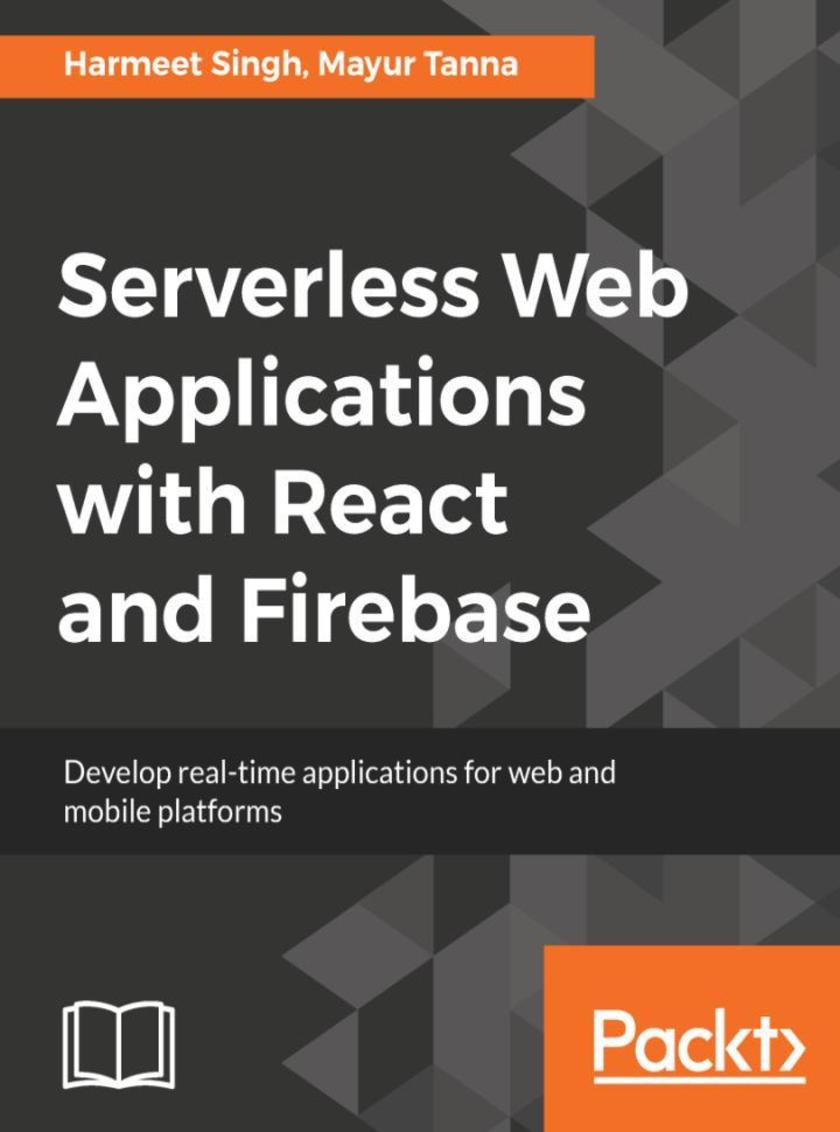
Serverless Web Applications with React and Firebase
¥73.02
Build rich and collaborative applications using client-side code with React, Redux, and Firebase About This Book ? A practical guide covering the full stack for web development with React 16 and Firebase ? Leverage the power of Firebase Cloud Storage, messaging, functions, OAuth, and database security to develop serverless web applications. ? Develop high-performance applications without the hassle of setting up complex web infrastructure. Who This Book Is For This book is for JavaScript developers who have some previous knowledge of React and want to develop serverless, full-stack applications but without the hassle of setting up a complex infrastructure. What You Will Learn ? Install powerful React.js and Firebase tools to make development much more efficient ? Create React components with Firebase to save and retrieve the data in real-time ? Use Firebase Authentication to make your React user interface secure ? Develop React and Firebase applications with Redux integration ? Firebase database security rules ? Firebase Cloud Storage Integration to upload and store data on the cloud ? Create a complete real-time application with React and firebase ? Using Firebase Cloud messaging and Cloud functions with React ? Firebase Cloud Storage integration with React In Detail ReactJS is a wonderful framework for UI development. Firebase as a backend with React is a great choice as it is easy, powerful, and provides great developer experience. It removes a lot of boilerplate code from your app and allows you to focus on your app to get it out quickly to users. Firebase with React is also a good choice for Most Viable Product (MVP) development. This book provides more practical insights rather than just theoretical concepts and includes basic to advanced examples – from hello world to a real-time seat booking app and Helpdesk application This book will cover the essentials of Firebase and React.js and will take you on a fast-paced journey through building real-time applications with Firebase features such as Cloud Storage, Cloud Function, Hosting and the Realtime Database. We will learn how to secure our application by using Firebase authentication and database security rules. We will leverage the power of Redux to organize data in the front-end, since Redux attempts to make state mutations predictable by imposing certain restrictions on how and when updates can happen. Towards the end of the book you will have improved your React skills by realizing the potential of Firebase to create real-time serverless web applications. Style and approach Practical insights rather than just theoretical concepts while including basic to advanced examples – from hello world to a real-time seat booking app and Helpdesk application.
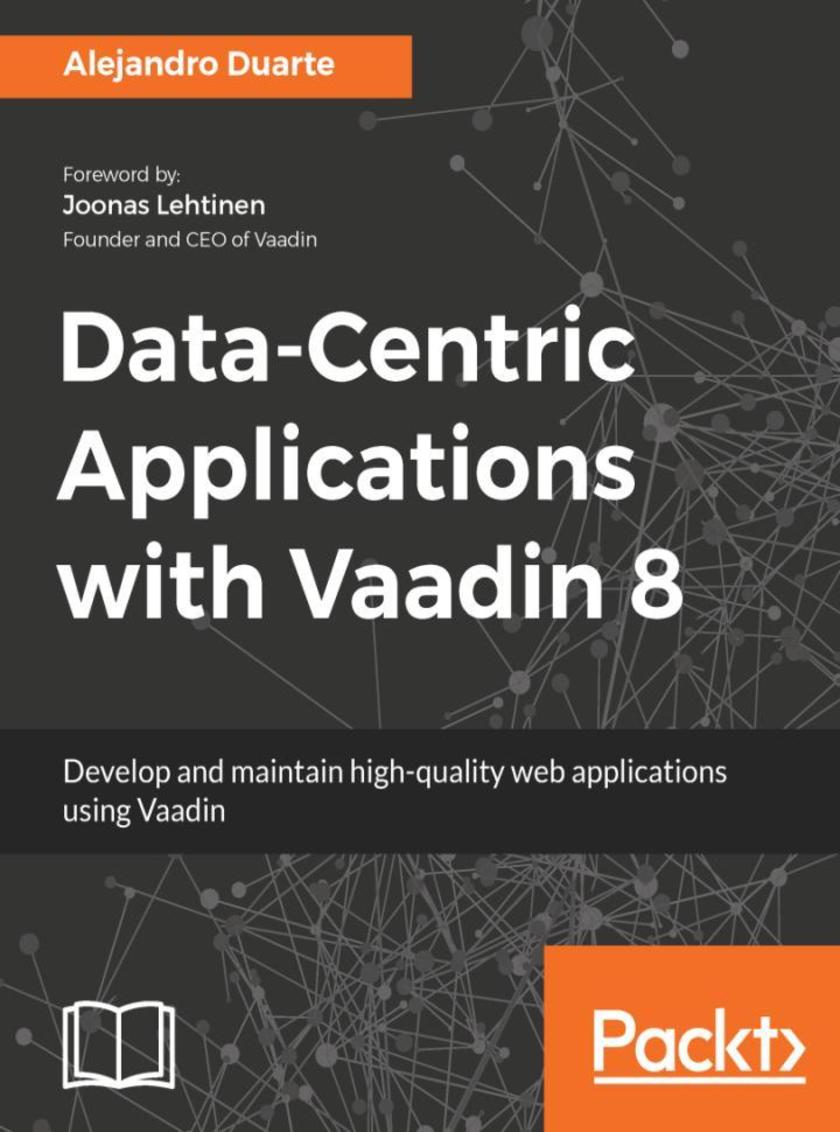
Data-Centric Applications with Vaadin 8
¥63.21
This book teaches you everything you need to know to create stunning Vaadin applications for all your web development needs. Deep dive into advanced Vaadin concepts while creating your very own sample Vaadin application. About This Book ? A one-stop book to enhance your working knowledge with Vaadin. ? Explore and implement the architecture of Vaadin applications. ? Delve into advanced topics such as data binding, authentication and authorization to improvise your application’s performance. Who This Book Is For If you area Software developer with previous experience with Vaadin and would like to gain more comprehensive and advanced skills in Vaadin web development, then this book is for you. What You Will Learn ? Modularize your Vaadin applications with Maven ? Create high quality custom components ? Implement robust and secure authentication and authorization mechanisms ? Connect to SQL databases efficiently ? Design robust CRUD (Create, Read, Update, Delete) views ? Generate stunning reports ? Improve resource consumption by using lazy loading In Detail Vaadin is an open-source Java framework used to build modern user interfaces. Vaadin 8 simplifies application development and improves user experience. The book begins with an overview of the architecture of Vaadin applications and the way you can organize your code in modules.Then it moves to the more advanced topics about advanced topics such as internationalization, authentication, authorization, and database connectivity. The book also teaches you how to implement CRUD views, how to generate printable reports, and how to manage data with lazy loading. By the end of this book you will be able to architect, implement, and deploy stunning Vaadin applications, and have the knowledge to master web development with Vaadin. Style and approach This book follows a hands-on approach and takes the readers through practical examples of how to create and deploy Vaadin applications. This book teaches the readers about the Vaadin architecture. It then moves on to the more advanced topics about advanced topics such as internationalization, authentication, authorization, and database connectivity. This step by step guide equips the readers with all they need to know to use Vaadin for web development.
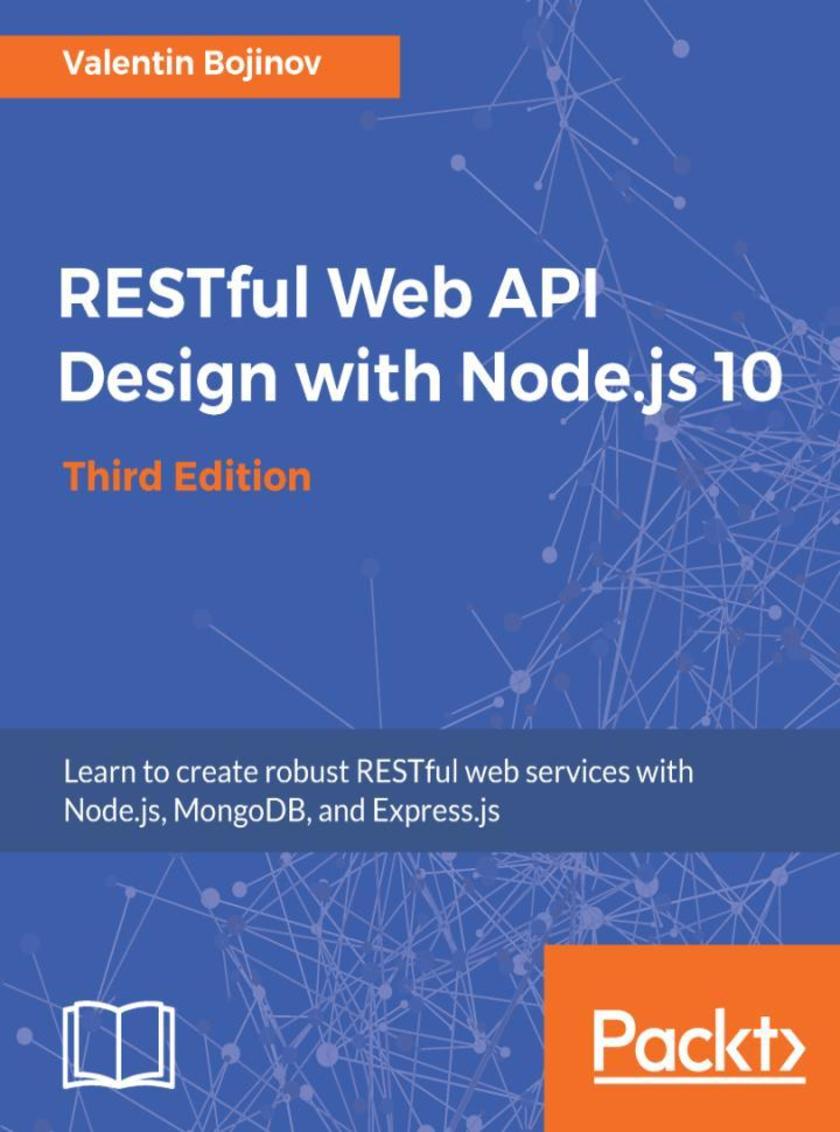
RESTful Web API Design with Node.js 10
¥54.49
Design and implement scalable and maintainable RESTful solutions with Node.js 10 About This Book ? Create rich and scalable RESTful API solutions from scratch ? Explore the new features of Node.js 10, Express 4.0, and MongoDB ? Integrate MongoDB in your Node.js application to store and secure your data Who This Book Is For If you are a web developer keen to enrich your development skills to create server-side RESTful applications based on the Node.js platform, this book is for you. Some knowledge of REST would be an added advantage, but is definitely not a necessity. What You Will Learn ? Install, develop, and test your own Node.js user modules ? Understand the differences between HTTP and RESTful applications ? Use self-descriptive URLs and set accurate HTTP status codes ? Eliminate third-party dependencies in your tests with mocking ? Implement automation tests for a REST-enabled endpoint with Mocha ? Secure your services with NoSQL database integration within Node.js applications ? Integrate a simple frontend using JavaScript libraries available on a CDN server In Detail When building RESTful services, it is really important to choose the right framework. Node.js, with its asynchronous, event-driven architecture, is exactly the right choice for building RESTful APIs. This third edition of RESTful Web API Design with Node.js 10 will teach you to create scalable and rich RESTful applications based on the Node.js platform. You will be introduced to the latest NPM package handler and understand how to use it to customize your RESTful development process. You will begin by understanding the key principle that makes an HTTP application a RESTful-enabled application. After writing a simple HTTP request handler, you will create and test Node.js modules using automated tests and mock objects; explore using the NoSQL database, MongoDB, to store data; and get to grips with using self-descriptive URLs. You’ll learn to set accurate HTTP status codes along with understanding how to keep your applications backward-compatible. Also, while implementing a full-fledged RESTful service, you will use Swagger to document the API and implement automation tests for a REST-enabled endpoint with Mocha. Lastly, you will explore some authentication techniques to secure your application. Style and approach Step-by-step practical guide to building RESTful applications
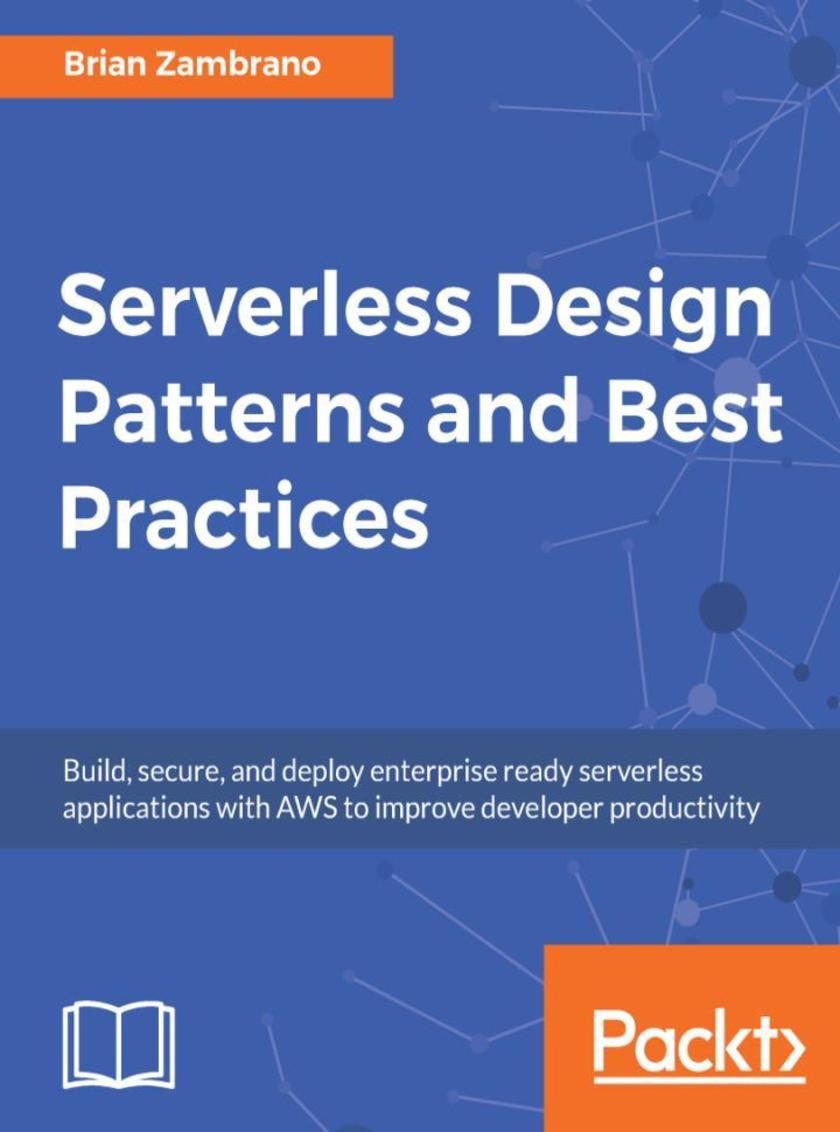
Serverless Design Patterns and Best Practices
¥81.74
Get started with designing your serverless application using optimum design patterns and industry standard practices About This Book ? Learn the details of popular software patterns and how they are applied to serverless applications ? Understand key concepts and components in serverless designs ? Walk away with a thorough understanding of architecting serverless applications Who This Book Is For If you're a software architect, engineer, or someone who wants to build serverless applications, which are non-trivial in complexity and scope, then this book is for you. Basic knowledge of programming and serverless computing concepts are assumed. What You Will Learn ? Comprehend the popular design patterns currently being used with serverless architectures ? Understand the various design options and corresponding implementations for serverless web application APIs ? Learn multiple patterns for data-intensive serverless systems and pipelines, including MapReduce and Lambda Architecture ? Learn how to leverage hosted databases, queues, streams, storage services, and notification services ? Understand error handling and system monitoring in a serverless architecture a serverless architecture ? Learn how to set up a serverless application for continuous integration, continuous delivery, and continuous deployment In Detail Serverless applications handle many problems that developers face when running systems and servers. The serverless pay-per-invocation model can also result in drastic cost savings, contributing to its popularity. While it's simple to create a basic serverless application, it's critical to structure your software correctly to ensure it continues to succeed as it grows. Serverless Design Patterns and Best Practices presents patterns that can be adapted to run in a serverless environment. You will learn how to develop applications that are scalable, fault tolerant, and well-tested. The book begins with an introduction to the different design pattern categories available for serverless applications. You will learn the trade-offs between GraphQL and REST and how they fare regarding overall application design in a serverless ecosystem. The book will also show you how to migrate an existing API to a serverless backend using AWS API Gateway. You will learn how to build event-driven applications using queuing and streaming systems, such as AWS Simple Queuing Service (SQS) and AWS Kinesis. Patterns for data-intensive serverless application are also explained, including the lambda architecture and MapReduce. This book will equip you with the knowledge and skills you need to develop scalable and resilient serverless applications confidently. Style and approach Readers will be taken through a set of specific software patterns and learn, in detail, how to apply these patterns and build working software on top of a serverless system. At each step along the way, the reader will learn about the subcomponents and subsystems which comprise the larger system and which may be used in the future to solve different types of challenges.
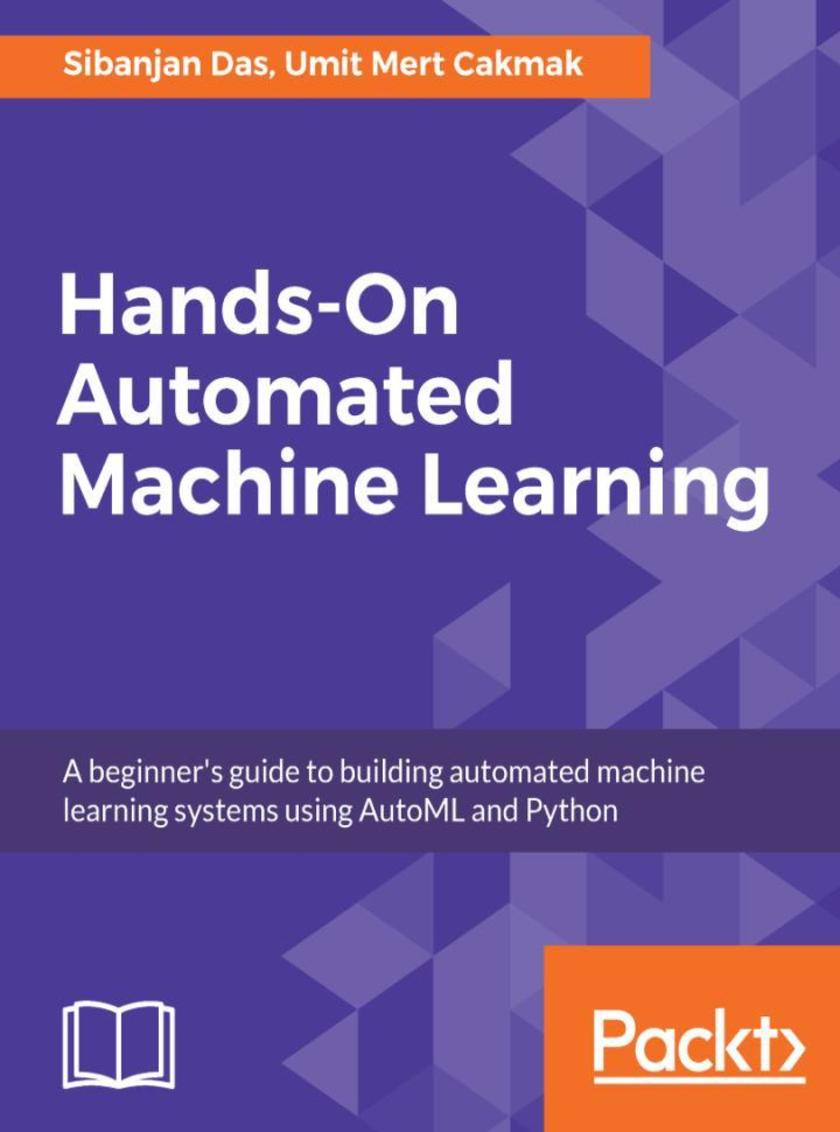
Hands-On Automated Machine Learning
¥73.02
Automate data and model pipelines for faster machine learning applications About This Book ? Build automated modules for different machine learning components ? Understand each component of a machine learning pipeline in depth ? Learn to use different open source AutoML and feature engineering platforms Who This Book Is For If you’re a budding data scientist, data analyst, or Machine Learning enthusiast and are new to the concept of automated machine learning, this book is ideal for you. You’ll also find this book useful if you’re an ML engineer or data professional interested in developing quick machine learning pipelines for your projects. Prior exposure to Python programming will help you get the best out of this book. What You Will Learn ? Understand the fundamentals of Automated Machine Learning systems ? Explore auto-sklearn and MLBox for AutoML tasks ? Automate your preprocessing methods along with feature transformation ? Enhance feature selection and generation using the Python stack ? Assemble individual components of ML into a complete AutoML framework ? Demystify hyperparameter tuning to optimize your ML models ? Dive into Machine Learning concepts such as neural networks and autoencoders ? Understand the information costs and trade-offs associated with AutoML In Detail AutoML is designed to automate parts of Machine Learning. Readily available AutoML tools are making data science practitioners’ work easy and are received well in the advanced analytics community. Automated Machine Learning covers the necessary foundation needed to create automated machine learning modules and helps you get up to speed with them in the most practical way possible. In this book, you’ll learn how to automate different tasks in the machine learning pipeline such as data preprocessing, feature selection, model training, model optimization, and much more. In addition to this, it demonstrates how you can use the available automation libraries, such as auto-sklearn and MLBox, and create and extend your own custom AutoML components for Machine Learning. By the end of this book, you will have a clearer understanding of the different aspects of automated Machine Learning, and you’ll be able to incorporate automation tasks using practical datasets. You can leverage your learning from this book to implement Machine Learning in your projects and get a step closer to winning various machine learning competitions. Style and approach Step by step approach to understand how to automate your machine learning tasks
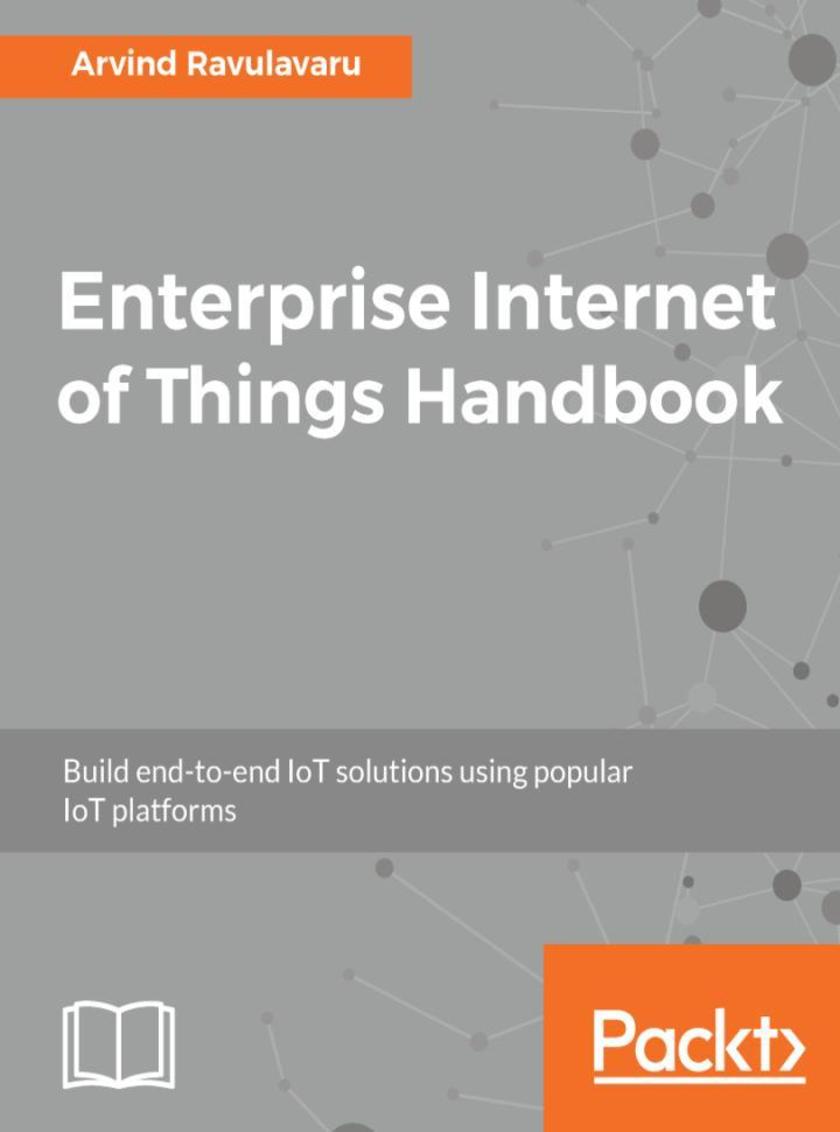
Enterprise Internet of Things Handbook
¥63.21
Get familiar with the building blocks of IoT solutions using off–the-shelf IoT platforms. About This Book ? Work with various trending IoT platforms such as AWS IoT, Azure IoT, Google IoT, IBM Watson IoT, and Kaa IoT ? Gain hands-on knowledge working with Cloud-based IoT platforms, IoT Analytics, and so on. ? A practical guide that will help you build IoT strategies for your organization Who This Book Is For This book is targeted at IoT architects and engineers, or any stakeholders working with IoT solutions in an organization. This book will also help decision makers and professionals from small- and medium-sized enterprises build an IoT strategy for their venture. What You Will Learn ? Connect a Temperature and Humidity sensor and see how these two can be managed from various platforms ? Explore the core components of AWS IoT such as AWS Kinesis and AWS IoTRules Engine ? Build a simple analysis dashboard using Azure IoT and Power BI ? Understand the fundamentals of Google IoT and use Google core APIs to build your own dashboard ? Get started and work with the IBM Watson IoT platform ? Integrate Cassandra and Zeppelin with Kaa IoT dashboard ? Review some Machine Learning and AI and get to know more about their implementation in the IoT domain. In Detail There is a lot of work that is being done in the IoT domain and according to Forbes the global IoT market will grow from $157B in 2016 to $457B by 2020. This is an amazing market both in terms technology advancement as well as money. In this book, we will be covering five popular IoT platforms, namely, AWS IoT, Microsoft Azure IoT, Google IoT Core, IBM Watson IoT, and Kaa IoT middleware. You are going to build solutions that will use a Raspberry Pi 3, a DHT11 Temperature and humidity sensor, and a dashboard to visualize the sensor data in real-time. Furthermore, you will also explore various components of each of the platforms that are needed to achieve the desired solution. Besides building solutions, you will look at how Machine Learning and IoT go hand in hand and later design a simple predictive web service based on this concept. By the end of this book, you will be in a position to implement an IoT strategy best-fit for your organization Style and approach An informative guide that will help you design and implement an IoT Strategy best-fit for your organization
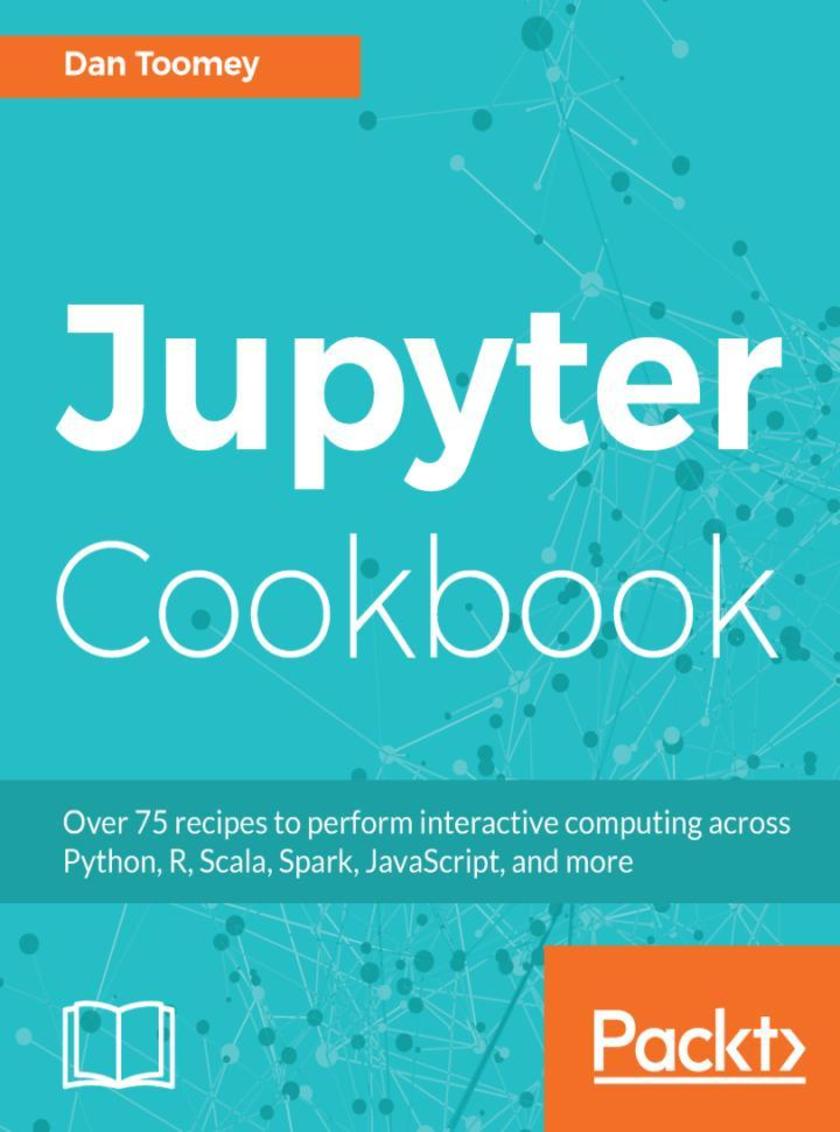
Jupyter Cookbook
¥73.02
Leverage the power of the popular Jupyter notebooks to simplify your data science tasks without any hassle About This Book ? Create and share interactive documents with live code, text and visualizations ? Integrate popular programming languages such as Python, R, Julia, Scala with Jupyter ? Develop your widgets and interactive dashboards with these innovative recipes Who This Book Is For This cookbook is for data science professionals, developers, technical data analysts, and programmers who want to execute technical coding, visualize output, and do scientific computing in one tool. Prior understanding of data science concepts will be helpful, but not mandatory, to use this book. What You Will Learn ? Install Jupyter and configure engines for Python, R, Scala and more ? Access and retrieve data on Jupyter Notebooks ? Create interactive visualizations and dashboards for different scenarios ? Convert and share your dynamic codes using HTML, JavaScript, Docker, and more ? Create custom user data interactions using various Jupyter widgets ? Manage user authentication and file permissions ? Interact with Big Data to perform numerical computing and statistical modeling ? Get familiar with Jupyter's next-gen user interface - JupyterLab In Detail Jupyter has garnered a strong interest in the data science community of late, as it makes common data processing and analysis tasks much simpler. This book is for data science professionals who want to master various tasks related to Jupyter to create efficient, easy-to-share, scientific applications. The book starts with recipes on installing and running the Jupyter Notebook system on various platforms and configuring the various packages that can be used with it. You will then see how you can implement different programming languages and frameworks, such as Python, R, Julia, JavaScript, Scala, and Spark on your Jupyter Notebook. This book contains intuitive recipes on building interactive widgets to manipulate and visualize data in real time, sharing your code, creating a multi-user environment, and organizing your notebook. You will then get hands-on experience with Jupyter Labs, microservices, and deploying them on the web. By the end of this book, you will have taken your knowledge of Jupyter to the next level to perform all key tasks associated with it. Style and approach The recipes in this book are highly practical and very easy to follow, and include tips and tricks that will help you crack any problem that you might come across while getting the most out of your Jupyter notebook.
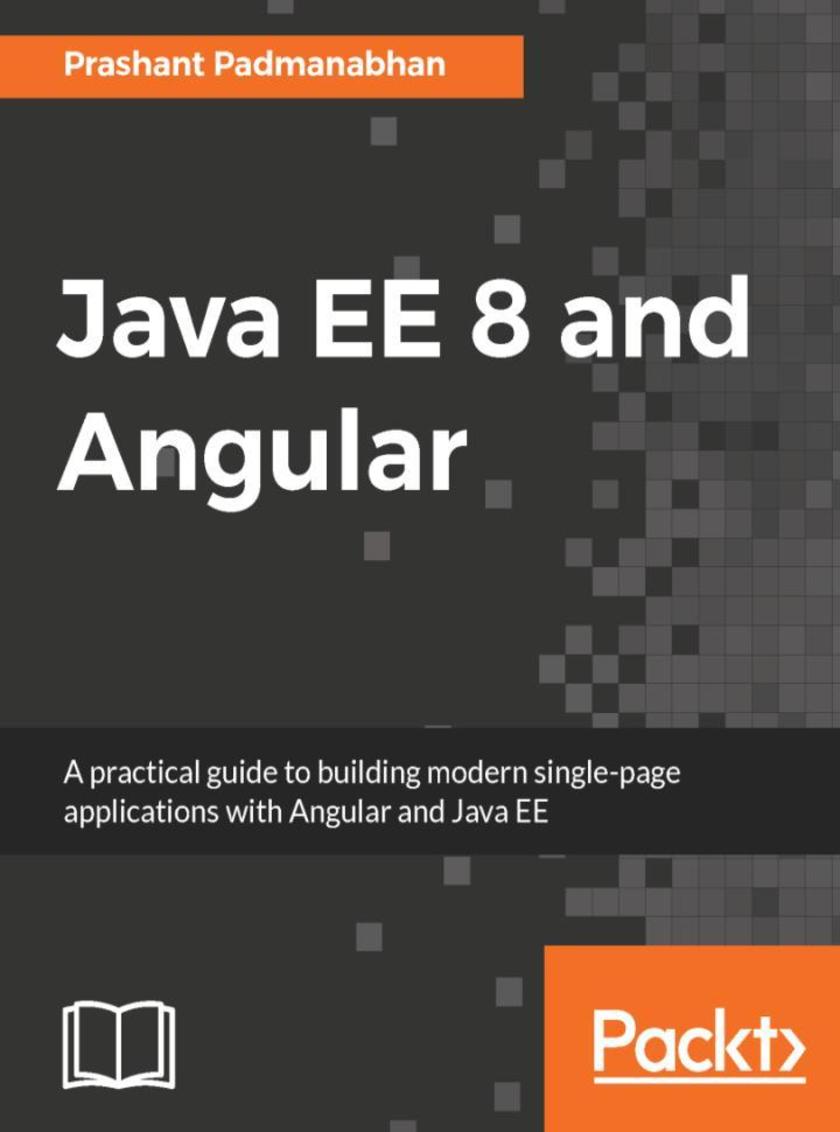
Java EE 8 and Angular
¥81.74
Learn how to build high-performing enterprise applications using Java EE powered by Angular at the frontend About This Book ? Leverage Java EE 8 features to build robust back end for your enterprise applications ? Use Angular to build a single page frontend and combine it with the Java EE backend ? Practical guide filled with ample real-world examples Who This Book Is For This book is for Java EE developers who would like to build modern enterprise web applications using Angular. No prior knowledge of Angular is expected. What You Will Learn ? Write CDI-based code in Java EE 8 applications ? Build an understanding of Microservices and what they mean in Java EE context ? Use Docker to build and run a microservice application ? Use configuration options to work effectively with JSON documents ? Understand asynchronous task handling and writing REST API clients ? Explore the fundamentals of TypeScript, which sets the foundation for working on Angular projects ? Use Angular CLI to add and manage new features ? Use JSON Web tokens to secure Angular applications against malicious attacks In Detail The demand for modern and high performing web enterprise applications is growing rapidly. No more is a basic HTML front-end enough to meet customer demands. This book will be your one stop guide to build outstanding enterprise web applications with Java EE and Angular. It will teach you how to harness the power of Java EE to build sturdy back ends while applying Angular on the front end. Your journey to building excellent web enterprise applications starts here! The book starts with a brief introduction to the fundamentals of Java EE and all the new APIs offered in the latest release. Armed with the knowledge of Java EE 8, you will go over what it’s like to build an end to end application, configure database connection for JPA, and build scalable microservice using RESTful APIs running in docker containers. Taking advantage of Payara Micro capabilities, you will build an Issue Management System, which will have various features exposed as services using Java EE backend. With a detailed coverage of Angular fundamentals, the book will expand the Issue Management System by building a modern single page application frontend. Moving forward you will learn to fit both the pieces together i.e. the frontend Angular application with the backend java EE microservices. As each unit in a microservice promotes high cohesion, you will learn different ways in which independent units can be tested efficiently. Finishing off with concepts on securing your enterprise applications, this book is a hands on guide to building Modern Web Applications. Style and approach This is a step-by-step tutorial that explains to building modern web enterprise applications.
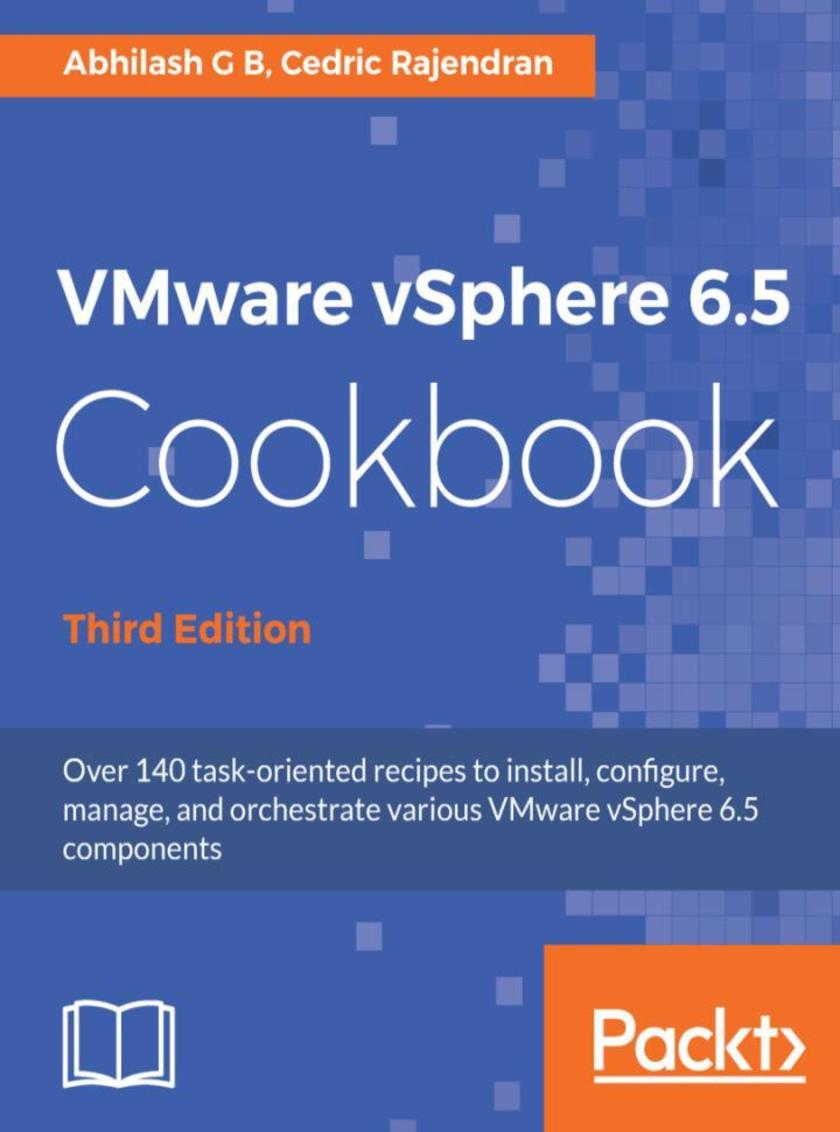
VMware vSphere 6.5 Cookbook - Third Edition
¥81.74
Deploy and manage VMware vSphere 6.5 components with ease. About This Book ? Simplified and to-the-point theory and practical recipes to deploy and manage vSphere 6.5 ? Discover the best ways to deploy stateless and stateful ESXi hosts and upgrade them ? Storage and network resource management ? Certificate management using VMCA ? Monitor the performance of a vSphere environment. Who This Book Is For If you are a system administrator, support professional, or anyone interested in learning how to install, configure, and manage a vSphere environment, then this book is for you. This task-oriented reference guide will also benefit consultants or infrastructure architects who design and deploy vSphere 6.5 environments. What You Will Learn ? Upgrade your existing vSphere environment or perform a fresh deployment. ? Automate the deployment and management of large sets of ESXi hosts in your vSphere Environment ? Configure and manage FC, iSCSI, and NAS storage, and get more control over how storage resources are allocated and managed ? Configure vSphere networking by deploying host-wide and data center-wide switches in your vSphere environment ? Configure high availability on a host cluster and learn how to enable the fair distribution and utilization of compute resources ? Patch and upgrade the vSphere environment ? Handle certificate request generation and renew component certificates ? Monitor performance of a vSphere environment In Detail VMware vSphere is a complete and robust virtualization product suite that helps transform data centers into simplified on-premises cloud infrastructures, providing for the automation and orchestration of workload deployment and life cycle management of the infrastructure. This book focuses on the latest release of VMware vSphere and follows a recipe-based approach, giving you hands-on instructions required to deploy and manage a vSphere environment. The book starts with the procedures involved in upgrading your existing vSphere infrastructure to vSphere 6.5, followed by deploying a new vSphere 6.5 environment. Then the book delves further into the procedures involved in managing storage and network access to the ESXi hosts and the virtual machines running on them. Moving on, the book covers high availability and fair distribution/utilization of clustered compute and storage resources. Finally, the book covers patching and upgrading the vSphere infrastructure using VUM, certificate management using VMCA, and finishes with a chapter covering the tools that can be used to monitor the performance of a vSphere infrastructure. Style and approach This book will quickly get you started with managing VMware components.
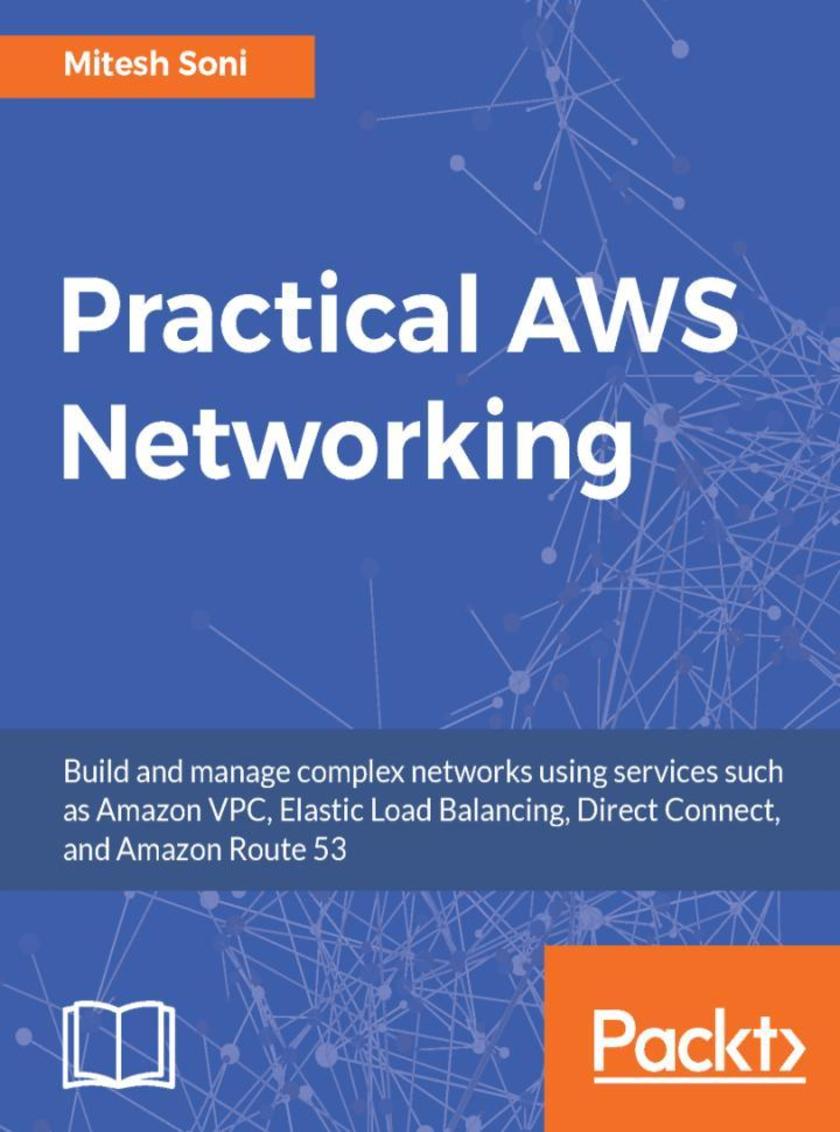
Practical AWS Networking
¥73.02
Your one step guide to learn all about AWS networking. About This Book ? Master your networking skills on Public Cloud. ? Gain hands-on experience of using Amazon VPC, Elastic Load Balancing, Direct Connect and other AWS products. ? Implement troubleshooting skills and best practices for security on AWS network. Who This Book Is For This book is targeted towards cloud architects, cloud solution providers, or any stakeholders dealing with networking on AWS Cloud. A prior idea of Amazon Web Services will be an added advantage. What You Will Learn ? Overview of all networking services available in AWS. ? Gain Work with load balance application across different regions. ? Learn auto scale instance based on the increase and decrease of the traffic. ? Deploy application in highly available and fault tolerant manner. ? Configure Route 53 for a web application. ? Troubleshooting tips and best practices at the end In Detail Amazon Web Services (AWS) dominates the public cloud market by a huge margin and it continues to be the first choice for many organizations. Networking has been an area of focus for all the leading cloud service providers. AWS has a suite of network-related products that help to perform network-related task in AWS. This book initially covers the basics of networking in AWS. Then we use AWS VPC to create an isolated virtual cloud for performing network-related tasks. We then provide an overview of AWS Direct Connect after taking a deep dive into scalability and load balancing using Auto scaling feature, Elastic Load Balancing, and Amazon Route S3. Toward the end of the book, we cover some troubleshooting tips and security best practices for your network. By the end of this book, you will have hands-on experience of working with network tasks on AWS. Style and approach A step by step practical guide that helps you use all networking services available in AWS effectively.
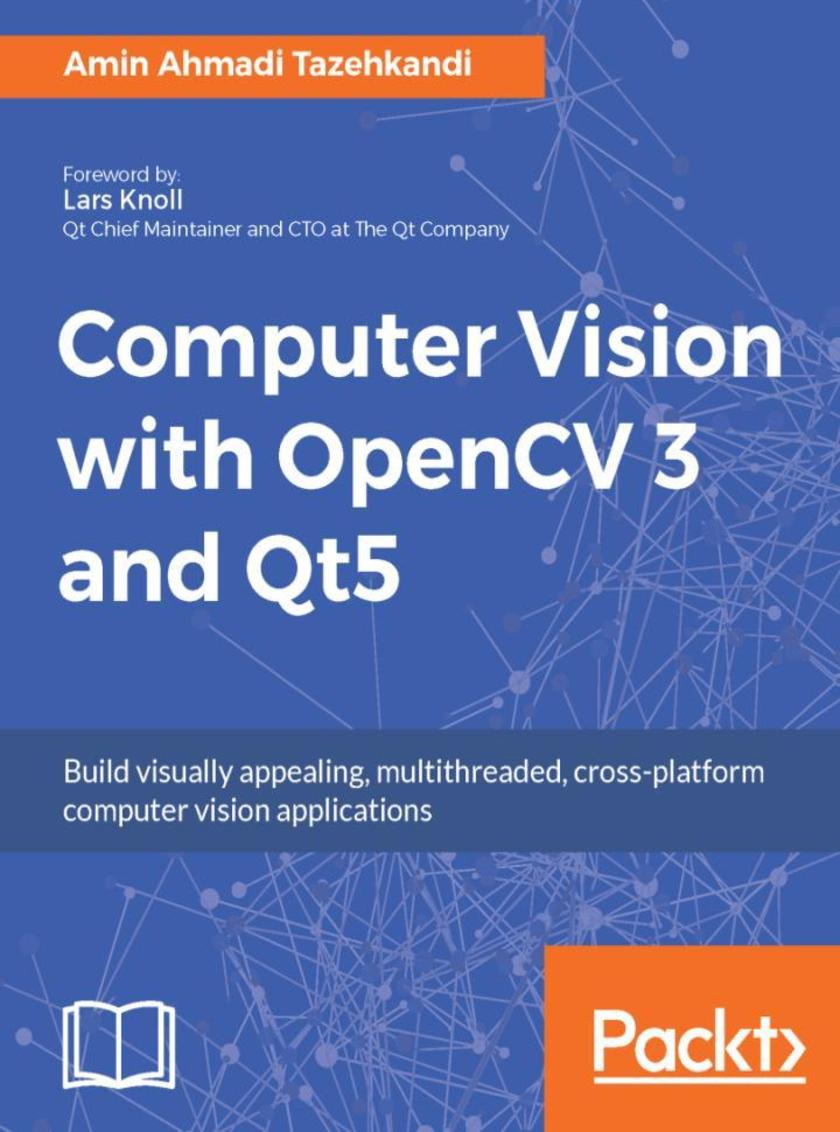
Computer Vision with OpenCV 3 and Qt5
¥90.46
Blend the power of Qt with OpenCV to build cross-platform computer vision applications About This Book ? Start creating robust applications with the power of OpenCV and Qt combined ? Learn from scratch how to develop cross-platform computer vision applications ? Accentuate your OpenCV applications by developing them with Qt Who This Book Is For This book is for readers interested in building computer vision applications. Intermediate knowledge of C++ programming is expected. Even though no knowledge of Qt5 and OpenCV 3 is assumed, if you’re familiar with these frameworks, you’ll benefit. What You Will Learn ? Get an introduction to Qt IDE and SDK ? Be introduced to OpenCV and see how to communicate between OpenCV and Qt ? Understand how to create UI using Qt Widgets ? Know to develop cross-platform applications using OpenCV 3 and Qt 5 ? Explore the multithreaded application development features of Qt5 ? Improve OpenCV 3 application development using Qt5 ? Build, test, and deploy Qt and OpenCV apps, either dynamically or statically ? See Computer Vision technologies such as filtering and transformation of images, detecting and matching objects, template matching, object tracking, video and motion analysis, and much more ? Be introduced to QML and Qt Quick for iOS and Android application development In Detail Developers have been using OpenCV library to develop computer vision applications for a long time. However, they now need a more effective tool to get the job done and in a much better and modern way. Qt is one of the major frameworks available for this task at the moment. This book will teach you to develop applications with the combination of OpenCV 3 and Qt5. This book will teach you to create cross-platform computer vision applications. We’ll begin by introducing Qt, its IDE, and its SDK. Next you’ll learn how to use the OpenCV API to integrate both tools, and see how to configure Qt to use OpenCV. You’ll go on to build a full-fledged computer vision application throughout the book. Later, you’ll create a stunning UI application using the Qt widgets technology, where you’ll display the images after they are processed in an efficient way. At the end of the book, you’ll learn how to convert OpenCV Mat to Qt QImage. You’ll also see how to efficiently process images to filter them, transform them, detect or track objects as well as analyze video. You’ll become better at developing OpenCV applications. Style and approach This book will help you understand and create cross-platform and multithreaded computer vision applications with the help of OpenCV 3 and Qt5, using a plugin-based and modular application development approach.
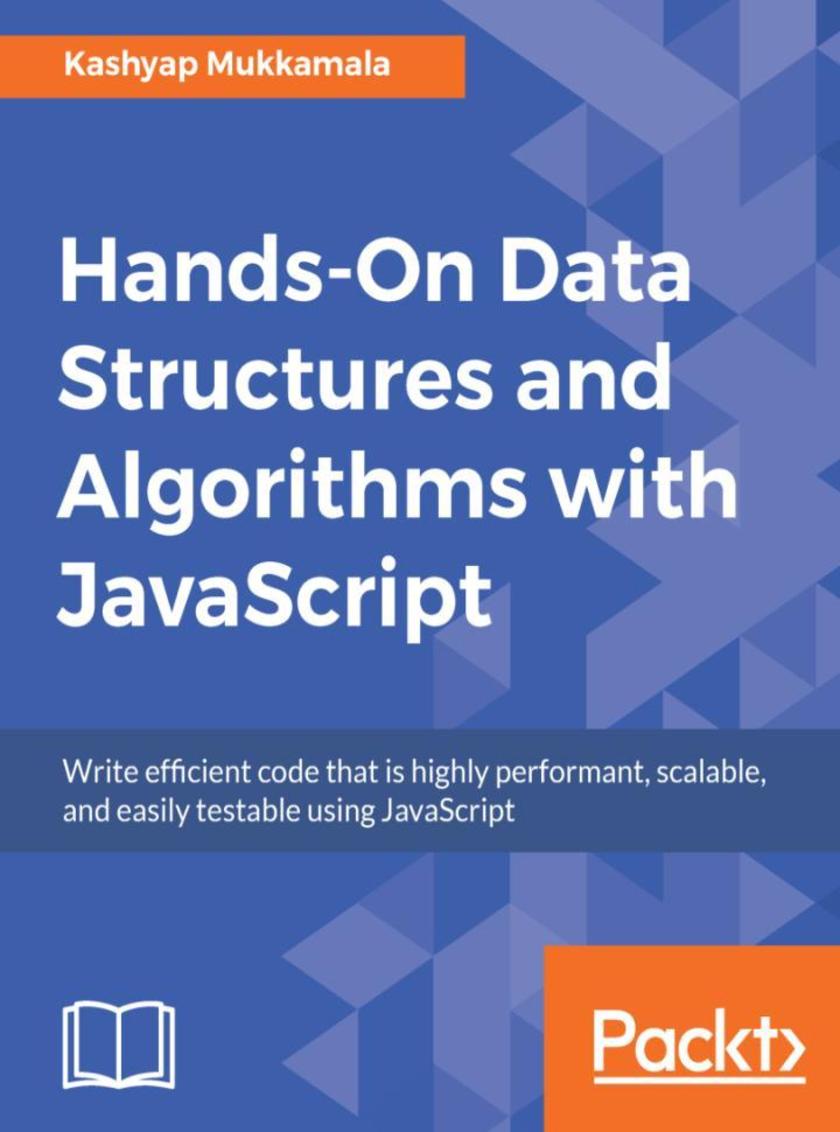
Hands-On Data Structures and Algorithms with JavaScript
¥81.74
Increase your productivity by implementing complex data structures and algorithms using JavaScript About This Book ? A step by step guide, which will provide you with a thorough discussion on the analysis and design of fundamental JavaScript data structures ? Get a better understanding of advanced concepts such as space and time complexity to optimize your code ? Focus more on solving the business problem and less on the technical challenges involved Who This Book Is For If you are a JavaScript developer looking for practical examples to implement data structures and algorithms in your web applications, then this book is for you. Familiarity with data structures and algorithms will be helpful to get the most out of this book. What You Will Learn ? Build custom Back buttons embedded within your application ? Build part of a basic JavaScript syntax parser and evaluator for an online IDE ? Build a custom activity user tracker for your application ? Generate accurate recommendations for credit card approval using Decision Trees ? Simplify complex problems using a graphs ? Increase the performance of an application using micro-optimizations In Detail Data structures and algorithms are the fundamental building blocks of computer programming. They are critical to any problem, provide a complete solution, and act like reusable code. Using appropriate data structures and having a good understanding of algorithm analysis are key in JavaScript to solving crises and ensuring your application is less prone to errors. Do you want to build applications that are high-performing and fast? Are you looking for complete solutions to implement complex data structures and algorithms in a practical way? If either of these questions rings a bell, then this book is for you! You'll start by building stacks and understanding performance and memory implications. You will learn how to pick the right type of queue for the application. You will then use sets, maps, trees, and graphs to simplify complex applications. You will learn to implement different types of sorting algorithm before gradually calculating and analyzing space and time complexity. Finally, you'll increase the performance of your application using micro optimizations and memory management. By the end of the book you will have gained the skills and expertise necessary to create and employ various data structures in a way that is demanded by your project or use case. Style and approach Step-by-step topics will help you get started with solutions for implementing classic data structures and algorithms. Learn by doing with hands-on code snippets that give you practical experience of the subject.
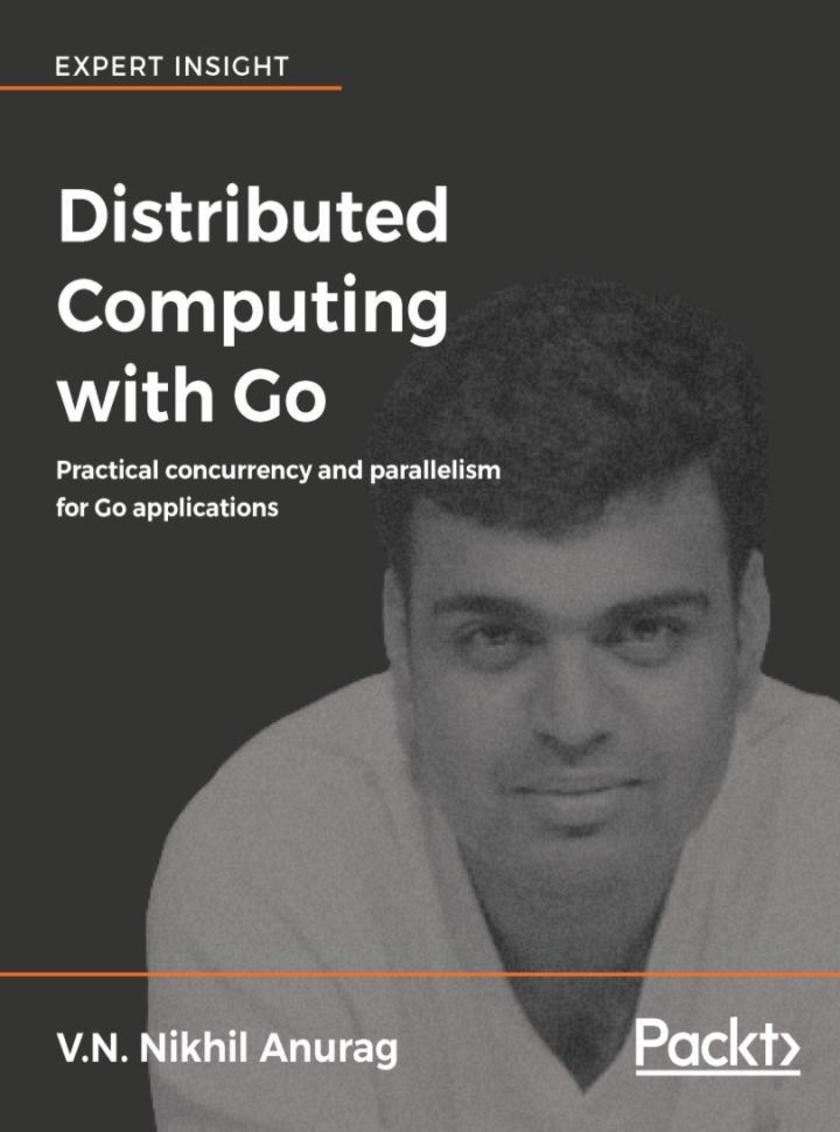
Distributed Computing with Go
¥73.02
A tutorial leading the aspiring Go developer to full mastery of Golang's distributed features. About This Book ? This book provides enough concurrency theory to give you a contextual understanding of Go concurrency ? It gives weight to synchronous and asynchronous data streams in Golang web applications ? It makes Goroutines and Channels completely familiar and natural to Go developers Who This Book Is For This book is for developers who are familiar with the Golang syntax and have a good idea of how basic Go development works. It would be advantageous if you have been through a web application product cycle, although it’s not necessary. What You Will Learn ? Gain proficiency with concurrency and parallelism in Go ? Learn how to test your application using Go's standard library ? Learn industry best practices with technologies such as REST, OpenAPI, Docker, and so on ? Design and build a distributed search engine ? Learn strategies on how to design a system for web scale In Detail Distributed Computing with Go gives developers with a good idea how basic Go development works the tools to fulfill the true potential of Golang development in a world of concurrent web and cloud applications. Nikhil starts out by setting up a professional Go development environment. Then you’ll learn the basic concepts and practices of Golang concurrent and parallel development. You’ll find out in the new few chapters how to balance resources and data with REST and standard web approaches while keeping concurrency in mind. Most Go applications these days will run in a data center or on the cloud, which is a condition upon which the next chapter depends. There, you’ll expand your skills considerably by writing a distributed document indexing system during the next two chapters. This system has to balance a large corpus of documents with considerable analytical demands. Another use case is the way in which a web application written in Go can be consciously redesigned to take distributed features into account. The chapter is rather interesting for Go developers who have to migrate existing Go applications to computationally and memory-intensive environments. The final chapter relates to the rather onerous task of testing parallel and distributed applications, something that is not usually taught in standard computer science curricula. Style and approach Distributed Computing with Go takes you through a series of carefully graded tutorials, building ever more sophisticated applications.
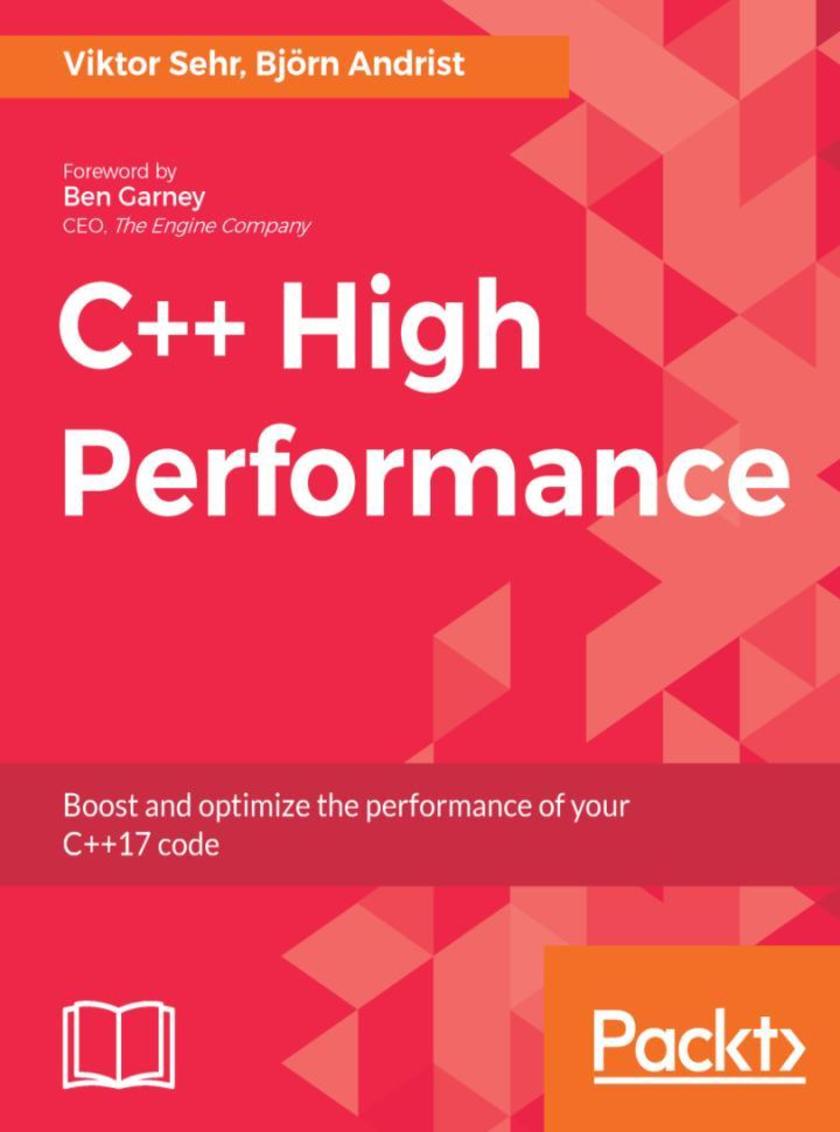
C++ High Performance
¥81.74
Write code that scales across CPU registers, multi-core, and machine clusters About This Book ? Explore concurrent programming in C++ ? Identify memory management problems ? Use SIMD and STL containers for performance improvement Who This Book Is For If you're a C++ developer looking to improve the speed of your code or simply wanting to take your skills up to the next level, then this book is perfect for you. What You Will Learn ? Find out how to use exciting new tools that will help you improve your code ? Identify bottlenecks to optimize your code ? Develop applications that utilize GPU computation ? Reap the benefits of concurrent programming ? Write code that can protect against application errors using error handling ? Use STL containers and algorithms effciently ? Extend your toolbox with Boost containers ? Achieve effcient memory management by using custom memory allocators In Detail C++ is a highly portable language and can be used to write complex applications and performance-critical code. It has evolved over the last few years to become a modern and expressive language. This book will guide you through optimizing the performance of your C++ apps by allowing them to run faster and consume fewer resources on the device they're running on. The book begins by helping you to identify the bottlenecks in C++. It then moves on to measuring performance, and you'll see how this affects the way you write code. Next, you'll see the importance of data structure optimization and how it can be used efficiently. After that, you'll see which algorithm should be used to achieve faster execution, followed by how to use STL containers. Moving on, you'll learn how to improve memory management in C++. You'll get hands on experience making use of multiple cores to enable more efficient and faster execution. The book ends with a brief overview of utilizing the capabilities of your GPU by using Boost Compute and OpenCL. Style and approach This easy-to-follow guide is full of examples and self-sufficient code snippets that help you with high performance programming with C++. You’ll get your hands dirty with this all-inclusive guide that uncovers hidden performance improvement areas for any C++ code.
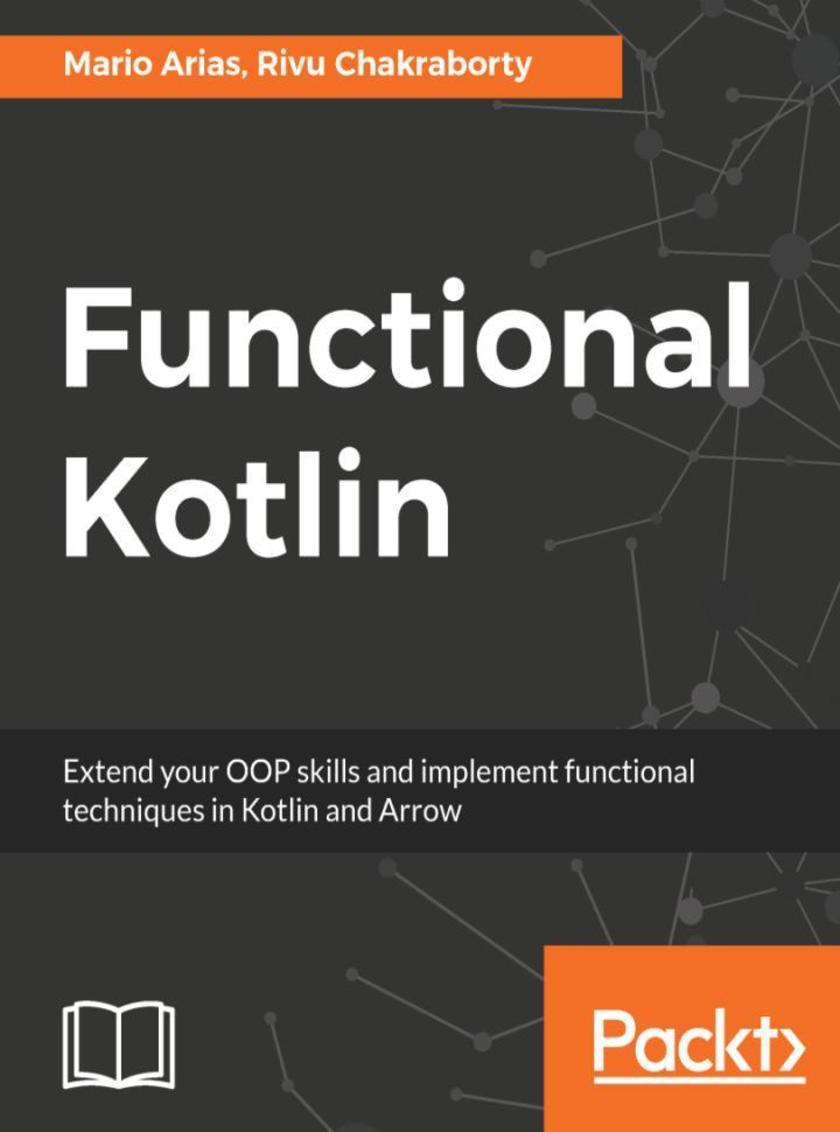
Functional Kotlin
¥90.46
Learn how to apply Functional Programming with Kotlin to real-life projects with popular libraries like Arrow. About This Book ? Focus on the functional aspects of Kotlin and identify the advantages that functional programming brings to the table and the associated coding benefits, ? Implement common functional programming design patterns and techniques. ? Learn to combine OOP and Reactive Programming with Functional Programming and how RxKotlin and funkTionale can help you implementing Functional Programming in Kotlin Who This Book Is For Kotlin developers who have no functional programming experience, will benefit from this book. What You Will Learn ? Learn the Concepts of Functional Programming with Kotlin ? Discover the Coroutines in Kotlin ? Uncover Using funkTionale plugin ? Learn Monads, Functiors and Applicatives ? Combine Functional Programming with OOP and Reactive Programming ? Uncover Using Monads with funkTionale ? Discover Stream Processing In Detail Functional programming makes your application faster, improves performance, and increases your productivity. Kotlin supports many of the popular and advanced functional features of functional languages. This book will cover the A-Z of functional programming in Kotlin. This book bridges the language gap for Kotlin developers by showing you how to create and consume functional constructs in Kotlin. We also bridge the domain gap by showing how functional constructs can be applied in business scenarios. We’ll take you through lambdas, pattern matching, immutability, and help you develop a deep understanding of the concepts and practices of functional programming. If you want learn to address problems using Recursion, Koltin has support for it as well. You’ll also learn how to use the funKtionale library to perform currying and lazy programming and more. Finally, you’ll learn functional design patterns and techniques that will make you a better programmer.By the end of the book, you will be more confident in your functional programming skills and will be able to apply them while programming in Kotlin. Style and approach Loaded with numerous code examples and real life projects, this book helps you dive deep into Functional Programming with Kotlin as well as applying it with help of Functional Programming Plugins like funkTionale and RxKotlin.
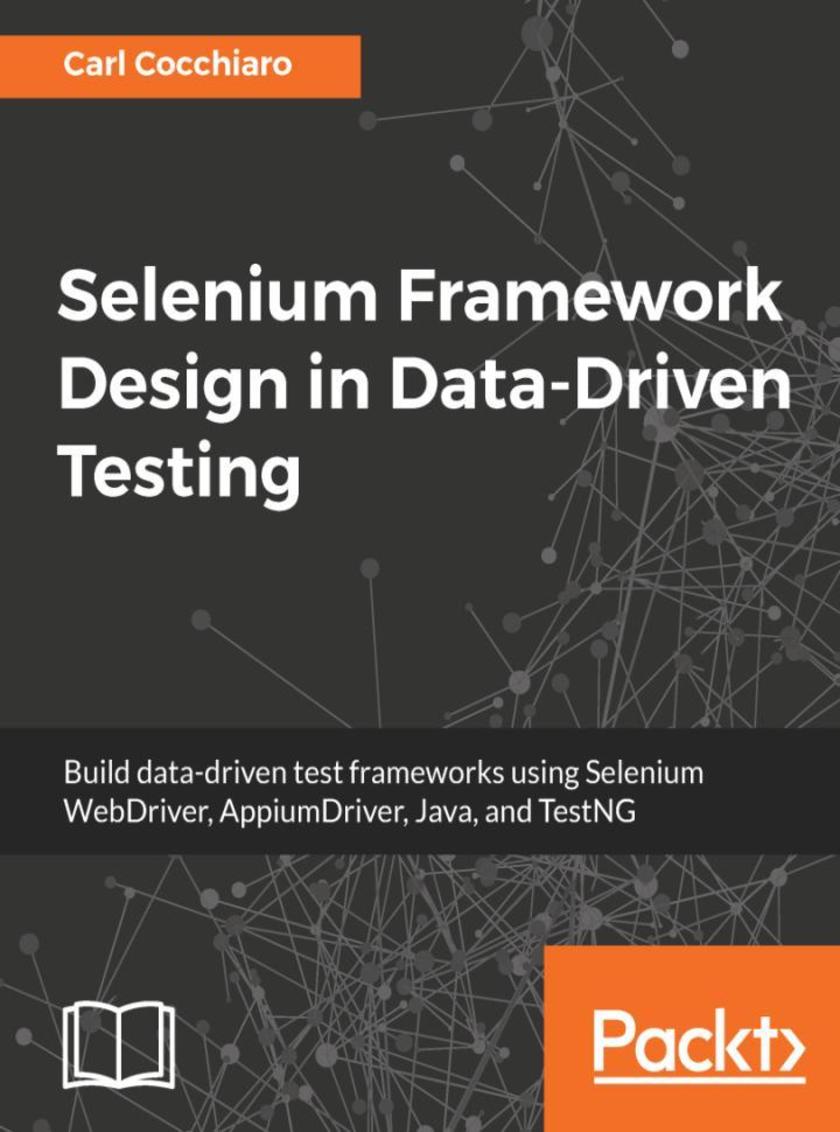
Selenium Framework Design in Data-Driven Testing
¥81.74
Take a deep dive into building data-driven test frameworks using Selenium WebDriver About This Book ? A comprehensive guide to designing data-driven test frameworks using the Selenium 3 WebDriver API, AppiumDriver API, Java-Bindings, and TestNG ? Learn how to use Selenium Page Object Design Patterns and D.R.Y. (Don’t Repeat Yourself) Approaches to software development in automated testing ? Discover the Selenium Grid Architecture and build your own grid for browser and mobile devices ? Use third party tools and services like ExtentReports for results processing, reporting, and SauceLabs for cloud-based test services Who This Book Is For This book is intended for software quality assurance/testing professionals, software project managers, or software developers with prior experience in using Selenium and Java to test web-based applications.This book is geared towards the quality assurance and development professionals responsible for designing and building enterprise-based testing frameworks.The user should have a working knowledge of the Java, TestNG, and Selenium technologies What You Will Learn ? Design the Selenium Driver Class for local, remote, and third party grid support ? Build Page Object Classes using the Selenium Page Object Model ? Develop Data-Driven Test Classes using the TestNG framework ? Encapsulate Data using the JSON Protocol ? Build a Selenium Grid for RemoteWebDriver Testing ? Construct Utility Classes for use in Synchronization, File I/O, Reporting and Test Listener Classes ? Run the sample framework and see the benefits of a live data-driven framework in real-time In Detail The Selenium WebDriver 3.x Technology is an open source API available to test both Browser and Mobile applications. It is completely platform independent in that tests built for one browser or mobile device, will also work on all other browsers and mobile devices. Selenium supports all major development languages which allow it to be tied directly into the technology used to develop the applications. This guide will provide a step-by-step approach to designing and building a data-driven test framework using Selenium WebDriver, Java, and TestNG. The book starts off by introducing users to the Selenium Page Object Design Patterns and D.R.Y Approaches to Software Development. In doing so, it covers designing and building a Selenium WebDriver framework that supports both Browser and Mobile Devices. It will lead the user through a journey of architecting their own framework with a scalable driver class, Java utility classes, JSON Data Provider, Data-Driven Test Classes, and support for third party tools and plugins. Users will learn how to design and build a Selenium Grid from scratch to allow the framework to scale and support different browsers, mobile devices, versions, and platforms, and how they can leverage third party grids in the Cloud like SauceLabs. Other topics covered include designing abstract base and sub-classes, inheritance, dual-driver support, parallel testing, testing multi-branded applications, best practices for using locators, and data encapsulation. Finally, you will be presented with a sample fully-functional framework to get them up and running with the Selenium WebDriver for browser testing. By the end of the book, you will be able to design your own automation testing framework and perform data-driven testing with Selenium WebDriver. Style and approach A comprehensive approach to designing data-driven test frameworks using the Selenium 3 WebDriver API, Java-Bindings, and TestNG Technologies




 购物车
购物车 个人中心
个人中心



